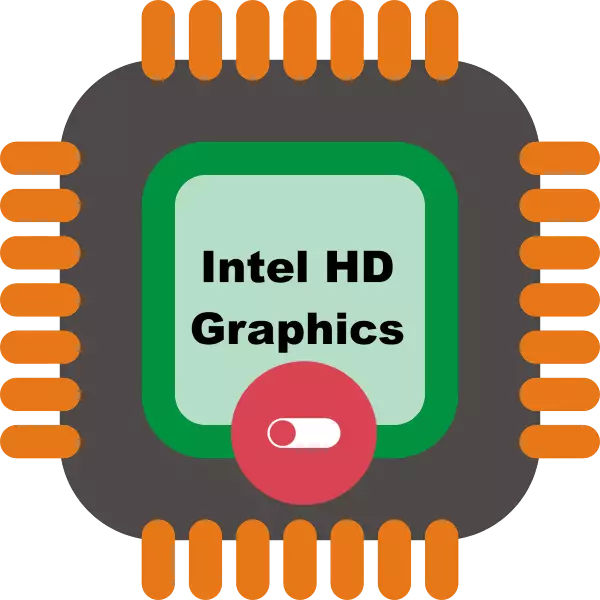
Most modern processors have a built-in graphics core, providing a minimum level of performance in cases where a discrete solution is not available. Sometimes the integrated GPU creates problems, and today we want to introduce you to the methods of turning off.
Turning off the integrated video card
As practice shows, the built-in graphics processor rarely leads to problems on desktop PCs, and most often the laptops suffer from problems, where the hybrid solution (two GPUs, built-in and discrete) sometimes works as expected.Actually, the disconnection can be made in several methods that are distinguished by reliability and the amount of effort spent. Let's start with the simplest.
Method 1: "Device Manager"
The simplest solution of the problem under consideration is the deactivation of the built-in graphics card through the Device Manager. The algorithm is the following:
- Call the "Run" window with a combination of Win + R, then enter the DevmGMT.msc word in its text field and click OK.
- After opening the equipment, find the "Video adapter" block and open it.
- The novice user is sometimes difficult to distinguish which of the devices presented is built-in. We recommend, in this case, open a web browser and use the Internet to accurately determine the desired device. In our example, the built-in is Intel HD Graphics 620.
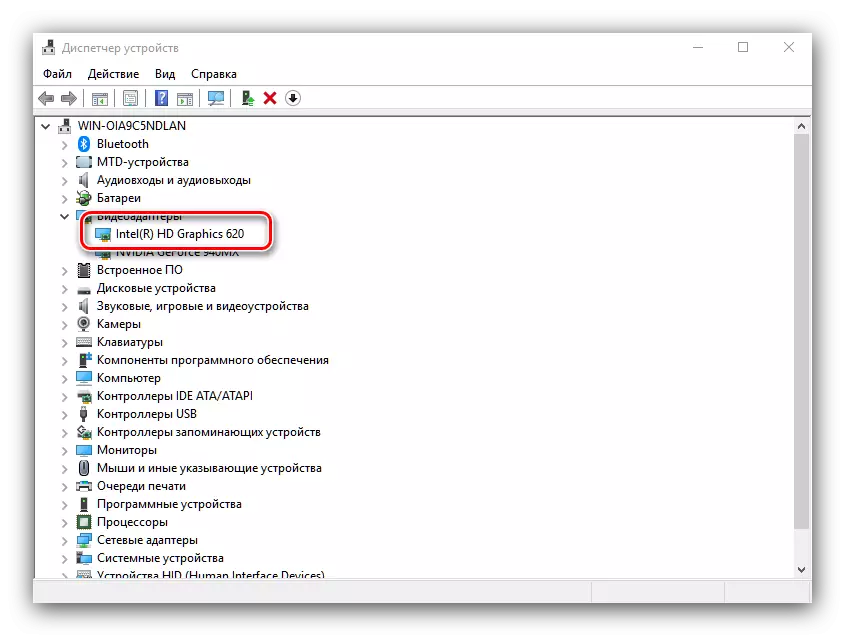
Highlight the desired position by clicking once the left mouse button, then right-click to call the context menu, in which you use the Device item.
- The integrated video card will be disabled, so you can close the "Device Manager".
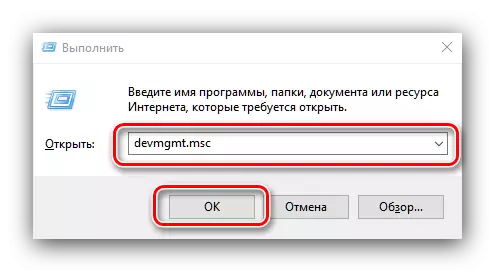
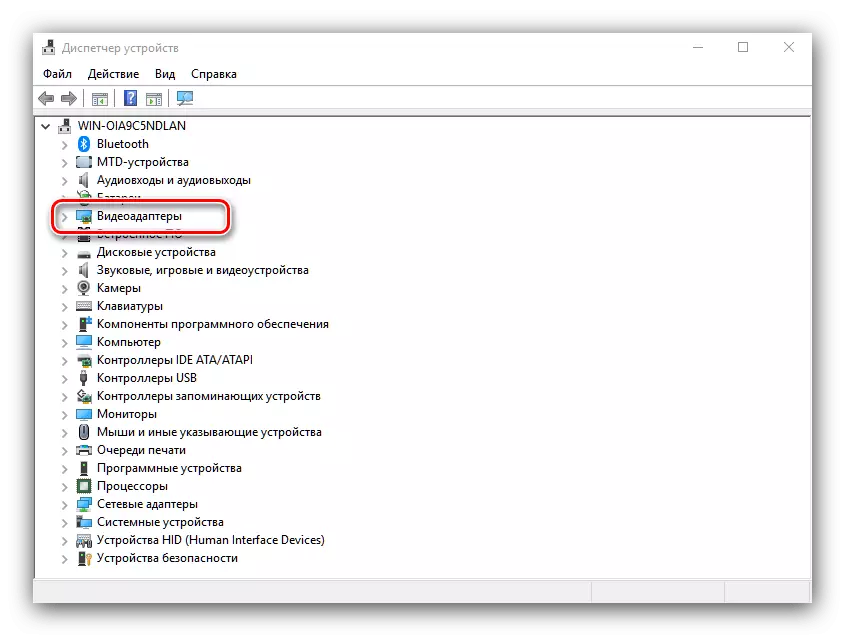
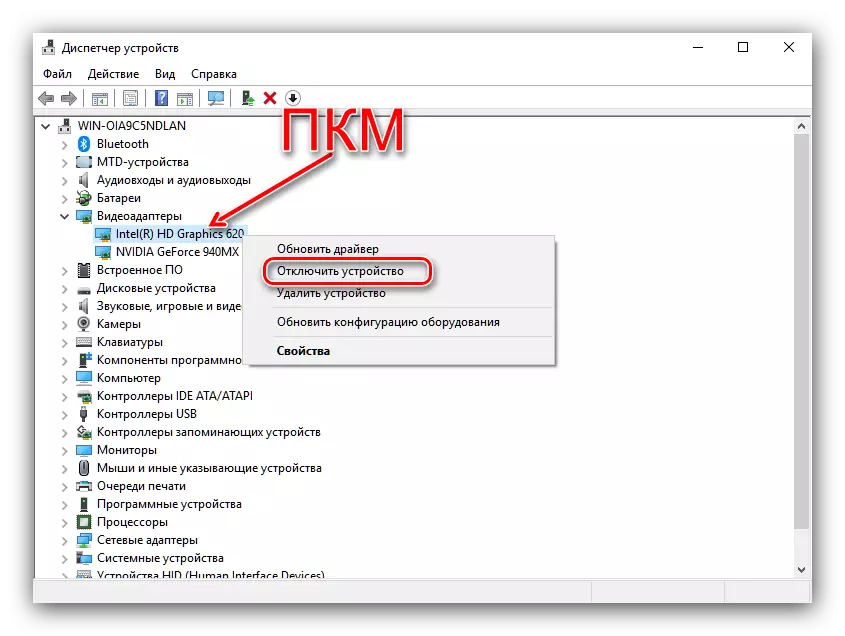
The described method is the easiest of the possible, but also the most inefficient - most often built-in graphics processor, one way or another, is included, especially on laptops, where the functionality of integrated solutions is controlled by way of the system.
Method 2: BIOS or UEFI
A more reliable version of the disconnection of the built-in GPU is to use the BIOS or its UEFI analog. Through the low-level setting interface of the motherboard, you can completely deactivate the integrated video card. It is necessary to act as follows:
- Turn off the computer or laptop, and when you turn on, go to the BIOS. For different manufacturers of motherboards and laptops, the technique is different - manuals for the most popular are below references.
Read more: How to go to BIOS on Samsung, Asus, Lenovo, Acer, MSI
- For different variations of the microprogram interface, the options are different. It is not possible to describe everything possible, so we simply offer the most common options options:
- "Advanced" - "PRIMARY GRAPHICS ADAPTER";
- "Config" - "Graphic Devices";
- "Advanced Chipset Features" - "Onboard GPU".
Directly depends on the BIOS integrated video card, directly from the type of BIOS: In some embodiments, it is sufficient to simply select "Disabled", in others it will be necessary to set the video card definition using the bus used (PCI-EX), in the third, you need to switch between Integrated Graphics and Discrete Graphics .
- After making changes to the BIOS settings, save them (as a rule, the F10 key is responsible for it) and restart the computer.
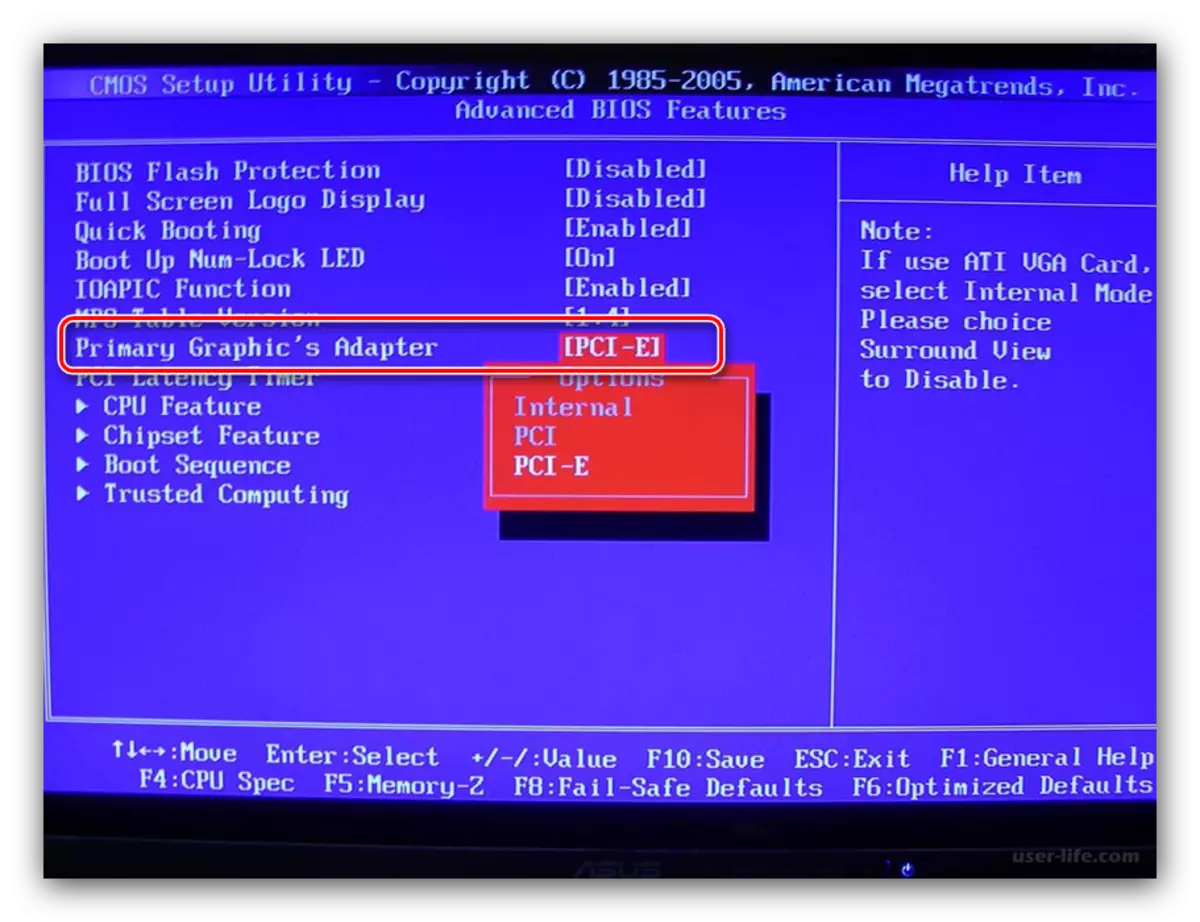
Now the integrated graphics will be disabled, and the computer will start using a full-fledged video card.
Conclusion
Disabling the built-in video card is not a difficult task, but you only need to perform this action if you have problems with it.
